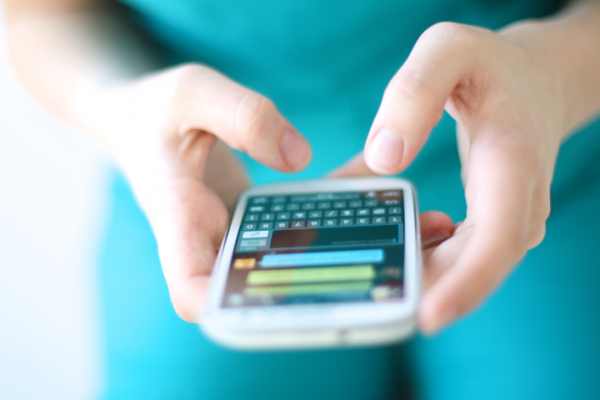Published on the 08/08/2019 | Written by Jonathan Cotton

eHealth holds great potential – and there’s more to it than glorified teleconferencing…
With eHealth rollouts on both sides of the Tasman and the technologies offering potential especially for countries with aging or remote populations, is medicine finally getting smart?
While Queensland digital hospital programs face down cost blowouts and systemic blunders, a range of new digital health initiatives in New South Wales are providing better service, better patient outcomes and cost savings – while setting the standard for other areas to follow.
Among them is the eMeds project, an electronic medication management system which aims to improve patient safety and modernise patient care by improving the way medications are managed at the hospital boundaries and in the hospital itself.
“If you have a technology like telemedicine, then, in my opinion, there is really no excuse not to use it.”
The eMed framework allows doctors, nurses and pharmacists to electronically record, prescribe, order, check, reconcile, dispense and administer medicines. Medication delivery to patients is supported by the system and provides access to patient information and clinical decision support in real time. The system also has the capacity to generate alerts for important interactions between medications.
Ninety-five percent of NSW facilities are on track to have electronic medication management by the end of the year.
Medication mistakes are the most preventable source of patient harm in hospitals. Historically most medications in NSW are prescribed via the national medication prescribing chart – a handwritten system based on a paper chart. Studies have shown that prescribing errors are reduced by around 55 percent at hospitals through using an electronic medication management system alone.
The next step will be in increasing use of the service, and rolling out single sign-on functionality and the continued reconciliation of regional siloed data into a single centralised digital record. Ultimately it is hoped the system will provide real-time data analytic capabilities.
The rollout is part of the government’s 2016 e-health strategy for NSW Health 2016-2026, which aims to create a consistent digital platform across the state, including better mobile access to core systems, and data analytics, in addition to the introduction of electronic medical records.
It’s a perfect IT storm, says the strategy document, and the moment to seize the opportunity is now.
“An era of open information in healthcare is underway. With years of research being aggregated in electronic databases, and with the government encouraging transparency across government agencies, quality data and analytics are now helping deliver greater impact across communities and industries, from finance to population health to clinical outcomes.”
NSW is also running several other proof-of-concept trials of new digital tools, including methods of sharing critical data via mobile devices. Ten emergency clinicians are trialling mobile notifications of real-time pathology results and risk indicators, via Apple products including Apple Watch.
“We want to give clinicians fast access to meaningful data insights which can help them to identify patients at risk of deterioration, and provide more timely mobile access to pathology results and X-rays,” says Dr Stephen Wood, director of Wagga Wagga Base Hospital’s emergency department.
The second project aims to create open platform access to simulated data, which researchers and developers can use to test the functionality and feasibility of their models without putting patients’ privacy at risk.
“The digitisation of healthcare is ramping up and all clinicians need to embrace it,” says Wood.
Practitioners across the Tasman are doing just that with the launch of Telestroke, a stroke intervention system – yes, that bears some resemblance to teleconferencing.
First trialled in 2016, the system connects Wellington-based neurologists with hospitals in Hawke’s Bay, Palmerston North, Nelson and Wairau after hours. The system provides expert advice to front line physicians – essentially big city brains to less experienced local clinicians.
So far so good. The Ministry of Health-supported project has achieved a dramatic increase in stroke treatment intervention – doubling rates of stroke thrombolysis (a clot-busting drug designed to disperse clots and return the blood supply to the brain) – to achieve the highest regional stroke intervention rate across New Zealand.
If a patient presents to a regional emergency department after-hours with a suspected stroke, the hospital team can contact a remote on-call neurologist or stroke specialist. A portable Wi-Fi connected Telestroke unit is then wheeled to the patient’s bed and the neurologist uses a 4G iPad to dial into the mobile unit (via the secure national health network), leading the clinical team evaluation of the patient. After a CT brain scan of the patient, the neurologist can review images and, if necessary, order administration of intravenous treatment.
Now a second system is being set up, connecting Christchurch Hospital specialists to doctors treating stroke patients at Grey Base, Timaru, Oamaru, Dunedin, Dunstan and Southland.
“Equity of access is so important,” says neurologist and pilot lead Dr Anna Ranta.
“Why should only patients living in big cities get access to round the clock expert treatment if there are available solutions? “ she says.
“If you have a technology like telemedicine, then, in my opinion, there is really no excuse not to use it.”



























